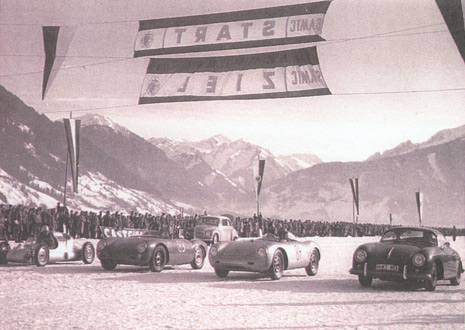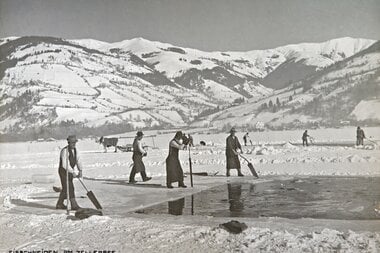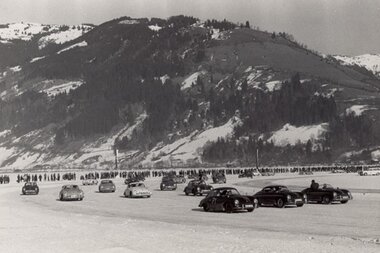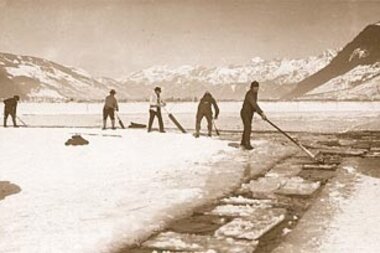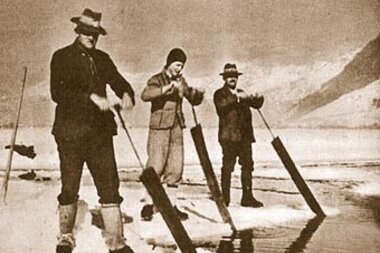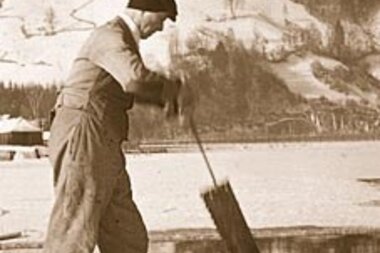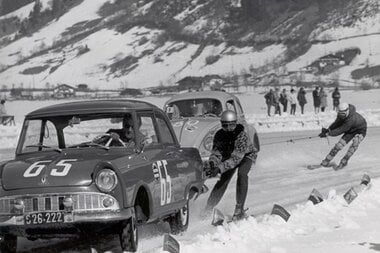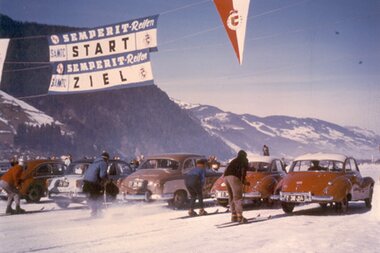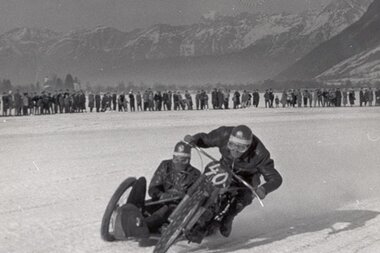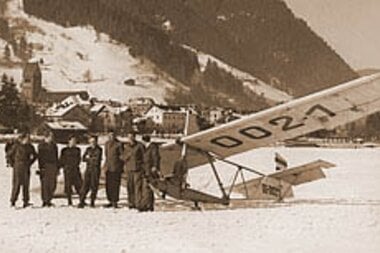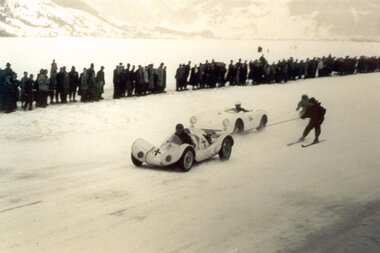Lake Zell as a historic meeting place for ice cutters, racers and pilots
3,133 railway wagons, 100 horses, 450 people: These are the key data on an exciting piece of history in Zell am See. The focus is on the heart of the region - Lake Zell. Dive in with us and find out why the ice of Lake Zell used to be worth its weight in gold, and what daring adventures have already taken place on the ice surface.
It must have been bitterly cold in the winter of 1883/1884: so cold that Lake Zell was covered by a thick layer of ice. But instead of using the lake for romantic ice skating, the ice became an important source of income for the region, and the lake turned into a workplace for up to 450 people.
How did this come about? Natural ice had already been appreciated and used as coolant - for example in breweries and inns to cool the storage rooms, as well as in surgery - since the 18th century. It is thus understandable that people in Zell am See-Kaprun wanted to utilise the natural advantages and use Lake Zell for ice production.
A clever mayor and the fortunate coincidence with the railway opening
The idea was promoted by the then mayor Josef Fill and others: He was instrumental in turning Zell am See into a thriving tourist resort and he was very committed to the market community being able to use the cheap source of raw materials - Lake Zell with its ice.
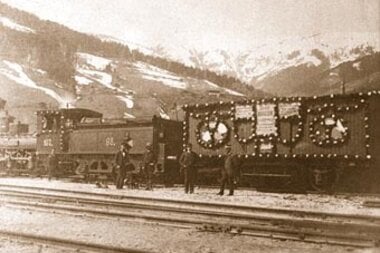
Ice cutting was an important (secondary) source of income for the region’s population: more than 450 people (many of whom were farmers from the surrounding area, but also from neighbouring Bavaria) were able to find work here in the winter of 1883/84. Incidentally, this winter was a real record year in terms of ice cutting!
In February and March, when the ice layer of Lake Zell was up to 50 centimetres thick, the workers cut large blocks of ice out of the lake with saws, axes and hooks. Some of these were taken to the ice cellars of the local inns, butcher's shops and breweries, but they were also shipped to destinations inland and abroad. This was made possible by the construction of the railway line, which had only just been opened and ran through Zell am See.
On the back of 100 horses
Horses were used to deliver the ice blocks from the lake to the railway line. In the winter of 1883/84, more than 100 horses were at work here! The ice blocks were then loaded into railway wagons: a total of 3,133 wagons, bringing the natural ice to Austria and Germany, were counted in the record year. Finally, in 1899, a separate railway siding was built for ice loading to facilitate transport. Over the years, the production of artificial ice brought an end to ice cutting. From the mid-1950s, artificial ice replaced natural ice on the market, and ice cutting was no longer profitable.

Lake Zell as a race track and airfield
In the past, however, the frozen Lake Zell was not only a workplace for ice cutters: the ice surface was a magnet for visitors - and a playground for daring athletes and even pilots - as early as the beginning of the 20th century!
In 1937, for example, the opening of the 5th World Academic Winter Games took place on the frozen Lake Zell. In addition, various sports competitions from motorbike skijoring to harness races, dog races and horse skijoring were held on the ice as early as the 1930s. The spectacular highlight of all events were the ice races, which were held in memory of Prof Dr h. c. Ferdinand Porsche from the 1950s onwards. For two decades, until 1973, daredevil drivers on motorbikes and in automobiles competed in these ice races.
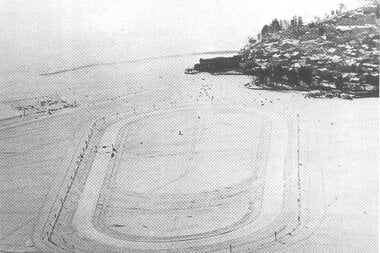
Incidentally, the ice of Lake Zell was not only conquered on tyres and hooves: the ice surface was even an aerial attraction. In 1924, courageous aviation pioneers dared to take off and land their first light aircraft on Lake Zell; glider pilots also landed their aircraft on the ice from 1929 onwards. In the 1940s, regular Alpine sightseeing flights for visitors commenced with take-off and landing points on the ice. And until the 1970s, it was even possible to take taxi flights from the frozen lake to Salzburg, Innsbruck and Munich!
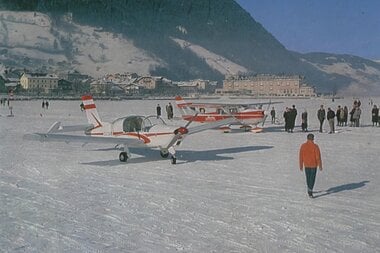
Much more than just Water and ice
So, the next time you stroll along the shores of Lake Zell, the pilots, racers and ice cutters of the past may come to your mind: after all, they all left their mark on Zell am See's eventful and varied history.

